Attention: You need JavaScript enabled to use this site.
Since its foundation in 1849, the West Brom has been proud to serve members from across its West Midlands heartland and beyond.
Throughout that time, we have remained steadfast to our founding principles – a commitment to financial success and security for the benefit of members, outstanding service, providing a warm environment for people to work, learn and develop their careers and creating deep roots in the local communities we serve.
The West Brom has seen highs and lows within this history, but the vision, determination and courage of members and employees has seen us become one of the UK’s top performing building societies.

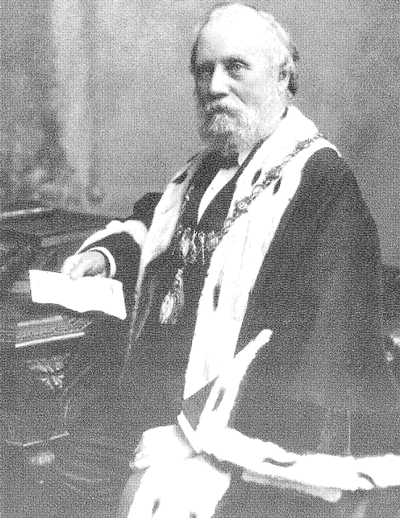
Alderman Reuben Farley, first President of West Bromwich Permanent
Benefit Building Society, 1849-1898, and the first Mayor of West Bromwich.
It was in an age of working-class advancement that 20 local men met with the intent of setting up the West Bromwich Permanent Building Society in the mid-1800s.
Their choice of launch date was significant in that it clearly highlighted their patriotism – April 23, St George’s Day, 1849. They were innovators of their time, for the Society was one of the earliest such bodies.
The founding members first met at the former Paradise Street Methodist Chapel, a venue associated with working-class people who prized respectability, hard work, thrift and independence.
No records remain of that inaugural meeting but, in the 1851 annual report, the committee appealed for people to ‘avail themselves of the advantages of this society, and thereby become their own landlords.’
The Society’s early objectives were clear – ‘to enable its members to acquire property by the fruits of their own honest industry and frugality from a common fund raised by members’ contributions paid fortnightly,’ together with the facility to provide the ‘safe deposit of money in large or small sums as either temporary or permanent investments.’
The Society was also a reformer and, in 1853, the West Bromwich stated that ‘any person, whether male or female, is eligible to be a member.’ This was a radical move at a time when no woman had the vote and the law did not recognise that a wife could own property.
Within a few years, the Society moved from Paradise Street to its first office at 402 Lower High Street. The offices were fitted out with fireproof safes for deeds and books but progress was slow and it was not until the 1860s that the Society really began to prosper.

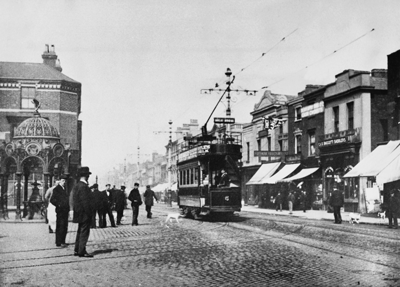
West Bromwich High Street, 1911.
Between 1860 and 1913, the West Bromwich saw rapid growth. In 1869, new offices were needed and the Society moved to 298 High Street, renting the premises for £30 a year. This was used until 1879, when success led to further expansion with the purchase of a house at 301 High Street, costing £3,389 10s 10d to erect and fit out.
The Society continued to grow, mainly due to a need for local housing and a strong economic climate. In 1881, there were 946 building societies in England and Wales with an average membership of 330 and receipts of £17,037. Impressively, the West Bromwich had 2,551 members and income of £61,701.
The late 19th Century was hard for building societies nationally but, by extolling the virtues of ‘mutual self-help’ and ‘the direct encouragement to thrift,’ the West Bromwich continued to prosper.
By the outbreak of World War One, the building society movement had public confidence and, by 1918, the West Bromwich had never been stronger.
During the Depression, the town did not suffer as much unemployment as neighbouring areas and the idea of buying your own home was boosted by the Government and the Housing Act of 1923, which supported building societies by making mortgages more readily available.

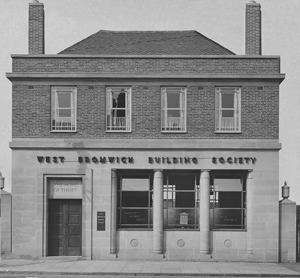
The West Bromwich Building Society Great Bridge Branch Office
which opened in June 1935.
The West Bromwich was soon seen as one of the best managed and most flourishing societies, which meant that, once again, it needed bigger headquarters.
A fresh site was found at 321 High Street, opposite the Town Hall, and the new £30,000 offices opened in 1928, which became known as ‘The Home of Thrift’. The building was described as ‘probably the most elaborately-equipped building in the town’ with a frontage of 65ft, faced in Portland stone with balconies on the first floor.
Inside it had a spacious banking hall, with marble floors and oak doors and, in the same year, the West Bromwich Permanent Benefit Building Society was imported under the Building Societies Act of 1874 and became the West Bromwich Building Society.
During World War Two and the post-war years, the Society continued to grow and consolidate its position and the West Bromwich was at the forefront of the building society movement.

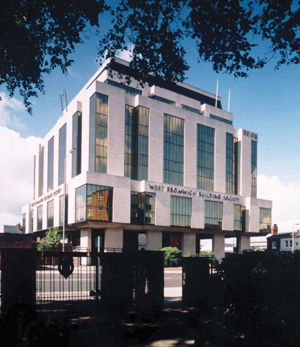
The West Bromwich Building Society Headquarters built in the late 1970s.
In 1978 operations were moved from The Home of Thrift to a new multi-million pound administration block, which was seen as taking the society into the year 2000 and beyond. Land had been bought in 1976 on the corner of the High Street and Dartmouth Street and the building took nearly two years to complete.
The six-storey building was air conditioned with open-plan offices and a computer room, together with better facilities for employees such as coffee areas and a canteen. In 1981, 321 High Street was also completely renovated to make the offices more modern.


Community grants helped support local projects including grassroots sports.
However, in the early 1990s, the country slipped into recession and a property slump. The West Bromwich was harder hit than most and had to fight for its survival, suffering staff cuts and branch closures.
But with prudent lending and sound management, the Society weathered the storm, symbolized by its decision to adopt the oak tree symbol as its new corporate identity.
The Society logo introduced in the 1990s.


Staff members at the launch of the West Brom's new look Kings Heath branch.
The Society’s brand identity would be refreshed once more in this period, along with a change of trading name to the West Brom. Colleagues and customers agreed that West Bromwich Building Society felt rather dated and most had already been shortening the name themselves for years.
The new brand was introduced to all branches as part of a major modernisation programme spanning 18 months. Several branches were moved to better locations in their respective towns to create more space for counter points and additional private consultation rooms.
In the wake of the credit crunch, which had a significant impact on the whole of the financial services sector, the West Brom adopted a Back to Basics approach and stepped away from more diverse activities such as commercial lending.
Its focus was squarely on the traditional building society practices of providing a safe home for savers’ money and making funds available to those who wish to purchase their own homes.
The current West Brom logo, introduced in 2010.

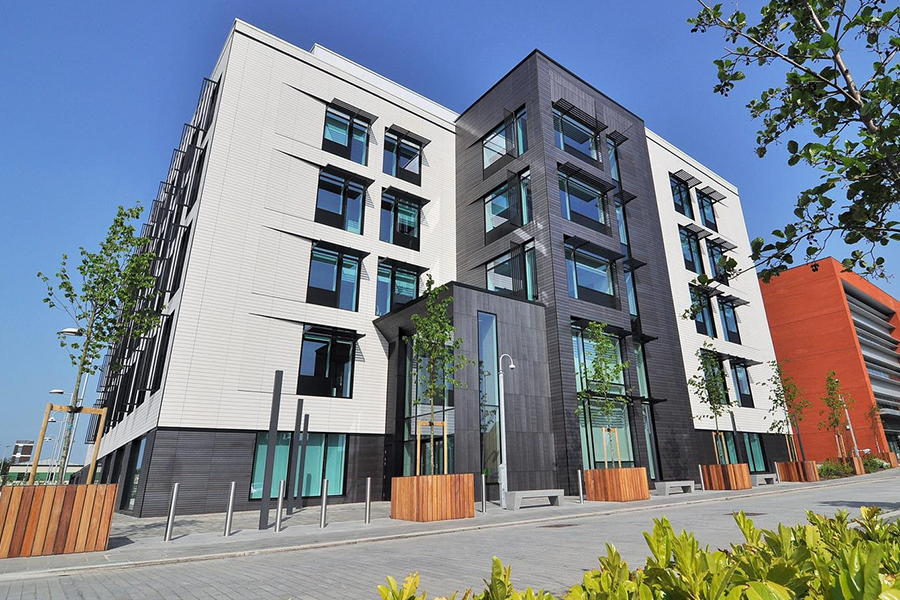
Providence Place in West Bromwich provides the current home for the Society's head office.
2016 marked another milestone for the Society as it moved into its new purpose-built headquarters at Providence Place. Still faithfully located in West Bromwich, the building is seen as a visual statement of the Society’s connection with its past and its promise of a forward-thinking future.
Around 550 building society staff moved into the modern, eye-catching 70,000 sq ft, five-storey structure. The move signified the start of a new era for the West Brom, one where it can go from strength to strength as the region’s leading building society.